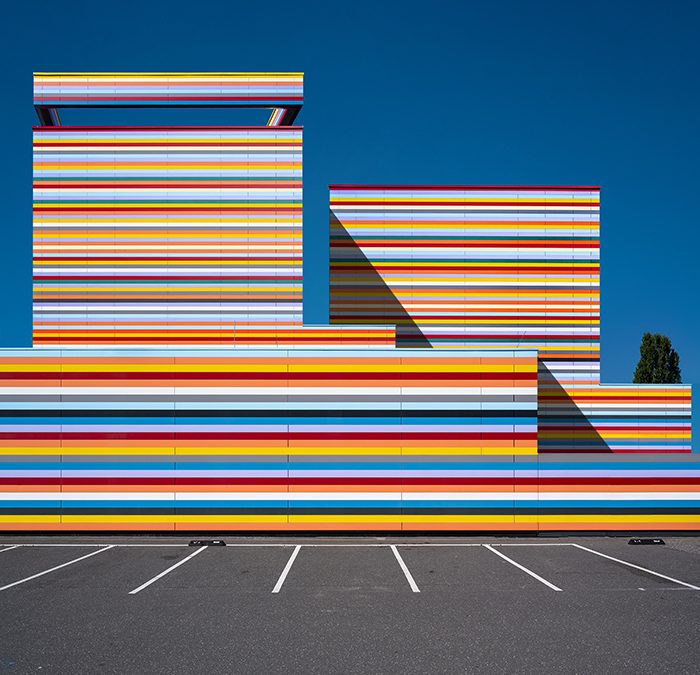Marc Fischer is an architectural photographer with a portfolio full of his trademarked vibrant-colored structures. Marc became interested in art relatively late. “I have always had a fable for aesthetics and beauty, for example in the interior design of my apartment and of course in my former job as a fashion photographer,” he says. “But it was only about 10 years ago that I discovered my fondness for art, visiting museums more and more often and discovering an interest in artists until I finally took my own path in this direction about three years ago.”
His photography career began with an apprenticeship as a photo/media lab technician. He later worked for a photographer as an image editor. “Over time, I took more and more photos myself and discovered my passion here. Most of it I taught myself; my high standards for myself and the quality of my pictures were my biggest drivers,” he recalls. “This is how I found my way to photography via a detour and gained a foothold in the industry as a photographer.”
Marc soon realized, though, that a career as a photo/media lab technician was not sustainable due to the advancement of digital photography. “Instead of letting that scare me, I went my own way with what I brought to the table. Never give up and make the best of your situation; it’s in your hands,” advises.
Although still young, Marc later pursued a career in fashion photography. “I had no idea how diverse this industry was. I had the somewhat naive idea that photography was exclusively, or at least to a large extent, fashion photography,” he remembers. But the field was exciting and interesting, leading him to start his own business, landing his first assignments as a photographer in the field of editorial and fashion photography.
Marc’s shift towards architectural photography was not sudden. “Fashion photography was my home for more than 15 years. But in the last years in this world, stress and pressure had gained the upper hand over artistic ambition; a personal fate then gave me the final push into a creative hole that at first seemed to be final,” he recalls. “I gave up photography. From one day to the next. Completely.”
After three years of internal searching and looking for a new perspective, Marc cautiously and daringly took his first steps on a new path of photography. “I explored my hometown Düsseldorf, Germany in a completely new way, with my camera and my bike. I wanted to take a different perspective, to see things that I had never seen before, that no one else had ever seen before. Focusing on the architecture of “my” city, which for most is so commonplace that it is hardly noticed, even perceived as ugly.”
Marc soon found what he was looking for. “I quickly realized that the combination of photography and movement brought me the satisfaction I had been missing and unconsciously seeking the years before. With every picture, every new city, more light and color came into my life,” he says. “Thanks to social media, my pictures spread all over the world, the response was great and encouraged me to show even more of how varied, colorful and artistic the architecture of my homeland is. How colorful our world can be if you just take the right angle.”
An architectural structure has a unique way of making it into Marc’s portfolio. ”When I’m photographing, I sometimes have something in mind beforehand that I’m specifically looking for, or I walk through a city with an open eye and let my spontaneous impulses guide me,” he explains. With a preference for geometry, Marc pays particular attention to lines, surfaces, lights, and shadows. He adds that a strong, interesting shadow always gives his photos more depth literally and metaphorically. “However,” he continues, “each of the images must also catch my attention a second time, namely when I look at the photographs I have taken and want to start editing them. Here I already have a different perspective on the images, but I use similar aspects and standards to decide on an image and the appropriate processing.” Marc admits that of all the ideas he originally has in his head, not everything works as he had imagined. On the other hand, images that had not yet convinced him of something special when photographing, he suddenly see quite differently, and art is created.






